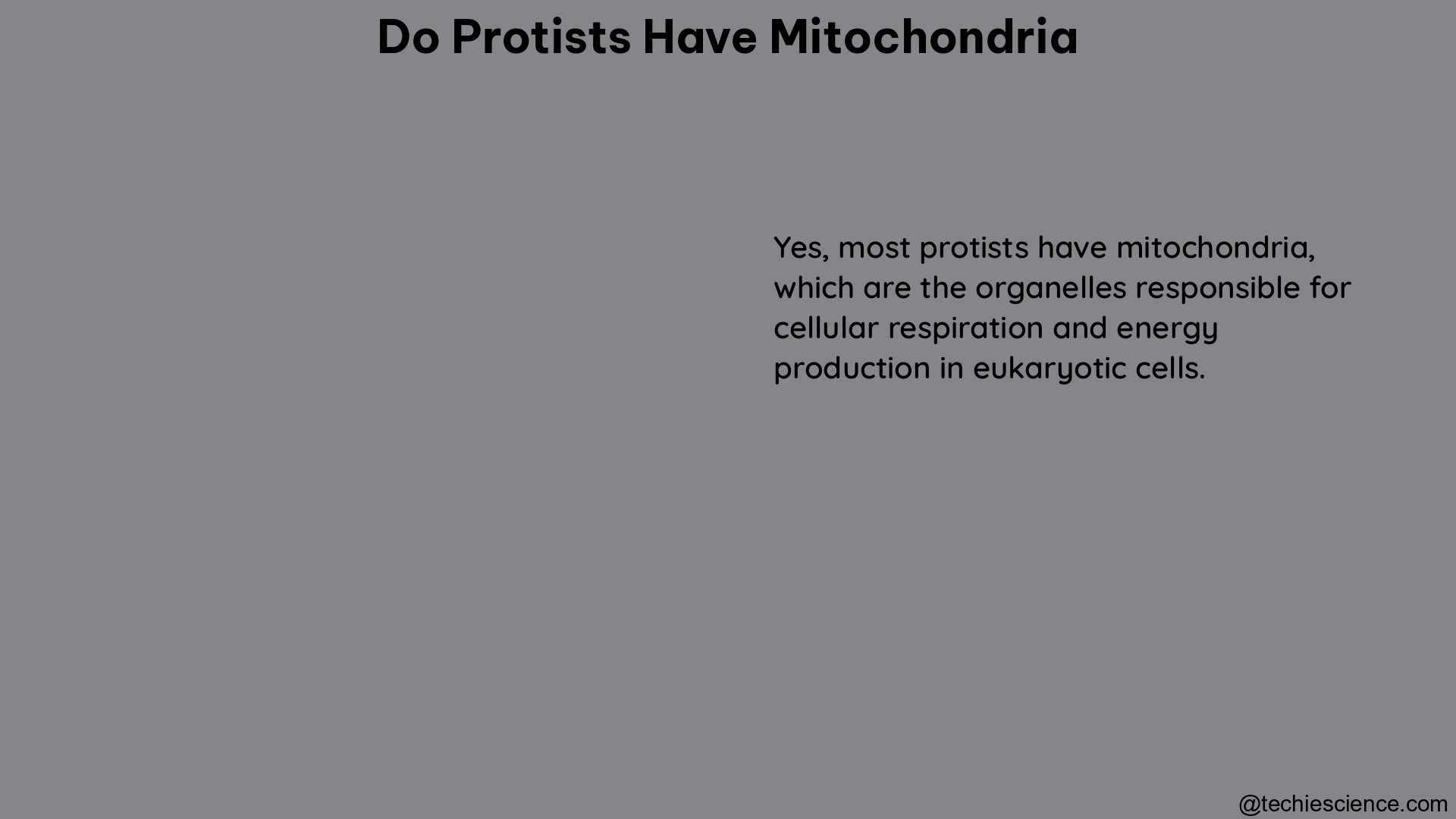Protists, a diverse group of microbial eukaryotes, exhibit a range of mitochondrial structures and functions, which can vary significantly between species. While some protists possess highly reduced or absent mitochondria, many others have well-developed mitochondria with unique features that can be targeted for therapeutic intervention.
Protists with Highly Reduced Mitochondria
Diplomonads and Parabasalids
- Diplomonads and parabasalids, such as Giardia and Trichomonas, possess highly reduced mitochondria that lack an electron transport chain and are unable to perform aerobic respiration.
- These mitochondria are sometimes referred to as “mitosomes” or “hydrogenosomes” and are thought to have evolved from more typical mitochondria through reductive evolution.
- Mitosomes in diplomonads are small, double-membrane-bound organelles that lack cristae and do not produce ATP through oxidative phosphorylation.
- Hydrogenosomes in parabasalids are larger, double-membrane-bound organelles that produce hydrogen and ATP through substrate-level phosphorylation.
Evolutionary Adaptations
- The reduction of mitochondria in diplomonads and parabasalids is believed to be an adaptation to their anaerobic or microaerophilic lifestyles, where they thrive in environments with limited oxygen availability.
- The loss of the electron transport chain and aerobic respiration in these protists is compensated by alternative energy-generating pathways, such as glycolysis and fermentation.
- The evolution of mitosomes and hydrogenosomes from more typical mitochondria is an example of reductive evolution, where organelles lose their original functions and become specialized for alternative metabolic processes.
Protists with Well-Developed Mitochondria

Apicomplexans and Kinetoplastids
- Many parasitic protists, including species of Plasmodium (which cause malaria) and Toxoplasma gondii, possess a single, well-developed mitochondrion with a dense matrix and many cristae.
- In the order Kinetoplastida, which includes the genera Leishmania and Trypanosoma (causative agents of human leishmaniasis), mitochondria exhibit a condensed network of DNA at a specific position, known as the Kinetoplast, which is always close to the flagellar basal body.
- Kinetoplastids also bear glycosomes, peroxisomes that concentrate enzymes of the glycolytic cycle.
Mitochondrial Function and Glycosomal Activity
- Mitochondrial volume and activity in these protists is closely tied to glycosomal activity, with mitochondrial volume and activity being highest when glycosomal activity is low, and vice versa.
- This unique relationship between mitochondria and glycosomes is believed to be an adaptation to the parasitic lifestyle of these protists, where they need to efficiently switch between different energy-generating pathways depending on the availability of nutrients and oxygen.
Therapeutic Potential
- The peculiar features of mitochondria in these parasitic protists, such as the Kinetoplast DNA and the close relationship with glycosomes, make them an attractive target for therapeutic drugs for the diseases they cause.
- Targeting the mitochondria of these protists can disrupt their energy metabolism and potentially lead to the development of new treatments for malaria, leishmaniasis, and other protist-borne diseases.
Conclusion
In summary, while some protists have highly reduced or absent mitochondria, many others possess well-developed mitochondria with unique features that can be targeted for therapeutic intervention. The diversity of mitochondrial structures and functions in protists is a testament to the evolutionary adaptations of these microbial eukaryotes to a wide range of environmental conditions and lifestyles.
References:
- de Souza Wanderley Attias Márcia Rodrigues Juliany C.F. (2009) Particularities of mitochondrial structure in parasitic protists (Apicomplexa and Kinetoplastida). Review Particularities of mitochondrial structure in parasitic protists.
- Quizlet (2021) Chapter 28 review questions Flashcards. Quizlet.
- Rowena Stern, Alexandra Kraberg, Eileen Bresnan, Wiebe H C F Kooistra, Connie Lovejoy, Marina Montresor, Xosé Anxelu G Morán, Fabrice Not, Rafael Salas, Raffaele Siano, Daniel Vaulot, Linda Amaral-Zettler, Adriana Zingone, Katja Metfies (2018) Molecular analyses of protists in long-term observation programmes—current status and future perspectives. Journal of Plankton Research.

Hi… I am Kaushani Misra, a Postgraduate in Biochemistry, and aspire to be an academic. Driven by curiosity and passion for science I enjoy learning new things and writing about them.